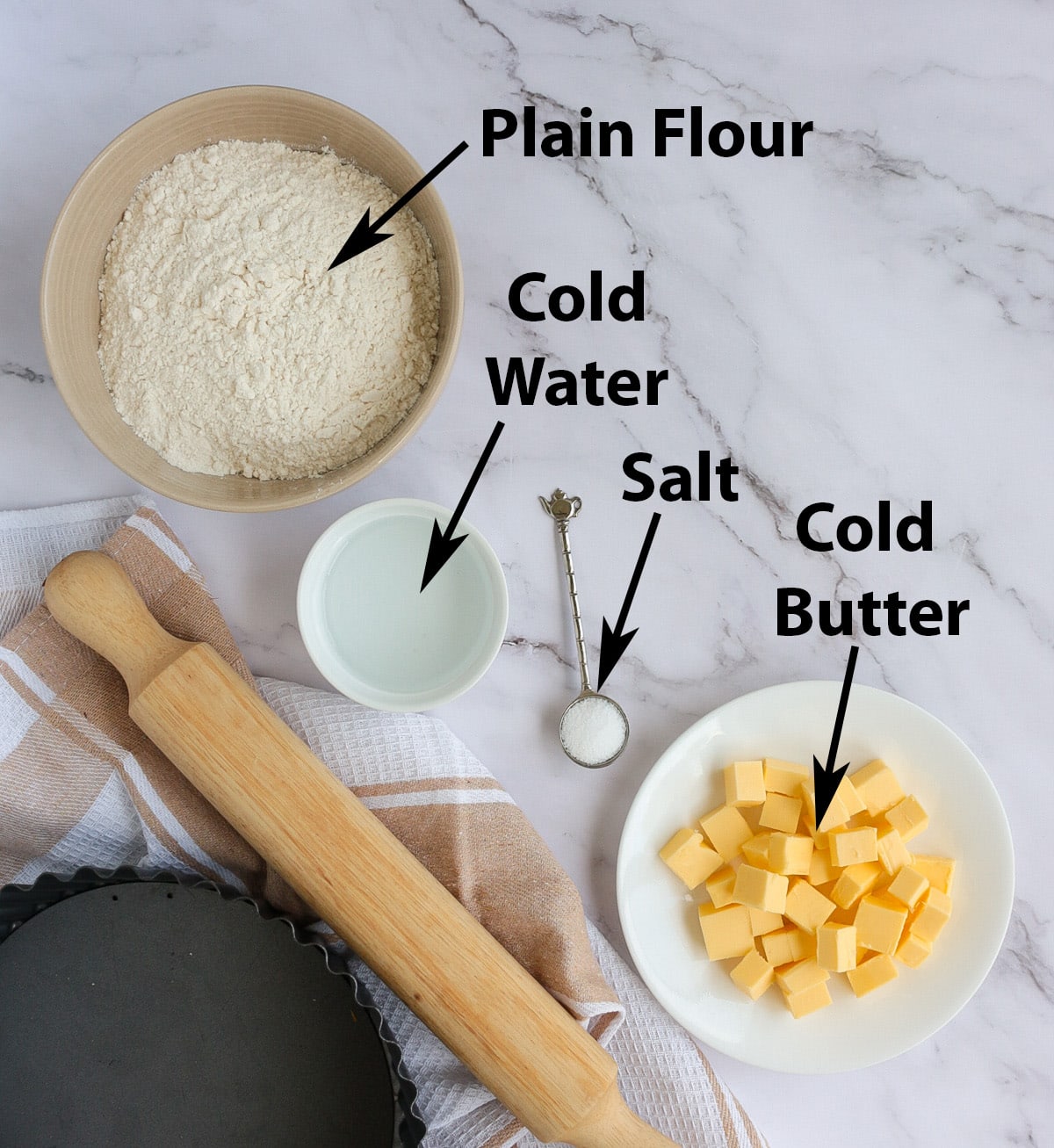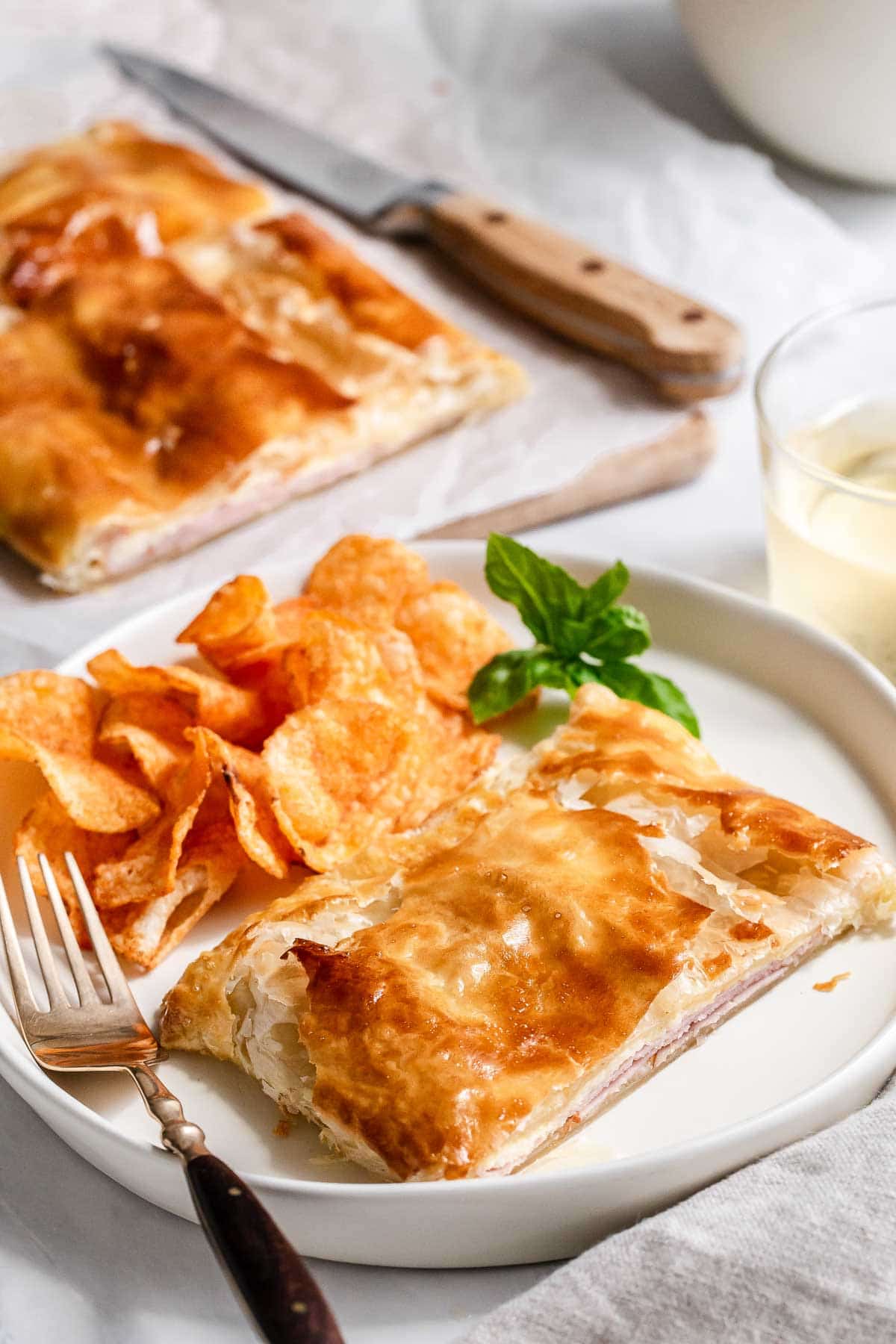Quick & Easy Homemade Puff Pastry
Introduction
Exploring the Magic of Puff Pastry:
Puff pastry is a versatile and indulgent dough that forms the basis of countless sweet and savory creations. From delicate pastries to savory tarts and pies, its light and airy layers are the hallmarks of classic French puff pastry-making.
Homemade Puff Pastry Ingredients and Equipment
Before diving into the world of puff pastry making, it's essential to gather the necessary ingredients and equipment to ensure success.
Homemade Puff Pastry Ingredients:
- All-Purpose Flour: Provides the structure and base for the PUFF PASTRY dough.
- Butter: The key to achieving flaky layers, quality butter with a high-fat content is essential.
- Salt: Enhances the flavor of the dough and helps regulate the fermentation process.
- Water: Binds the ingredients together and hydrates the dough.
Ingredients
- 2 1/4 cups all-purpose flour
- 1 teaspoon salt
- 1/2 cup cold unsalted butter, cut into small cubes
- 1/4 cup ice water
Optional:
- 1/4 teaspoon sugar (if making a sweet puff pastry)
- 1/2 teaspoon vinegar (to help with flakiness)
Homemade Puff Pastry Equipment:
- Large Mixing Bowl: For combining the ingredients and kneading the dough.
- Rolling Pin: Essential for rolling out the dough to the desired thickness.
- puff pastry Cutter or Bench Scraper: Used to cut the dough into desired shapes and sizes.
- Parchment Paper: Provides a non-stick surface for rolling out and shaping the dough.
- Refrigerator: Essential for chilling the dough between folds to ensure proper lamination.
Homemade Puff Pastry Step-by-Step Instructions
Achieving perfect puff pastry requires precision, patience, and attention to detail. Follow these step-by-step instructions to master the technique:.
Instructions
- If making the puff pastry by hand, sift the flour into a large bowl and add the salt and butter. Using your fingers, gently mix to a rough dough.
- If making the puff pastry using a mixer, sift the flour into the bowl and add the salt and the butter. Using a paddle attachment, work at a medium speed for 2-3 minutes until the butter has formed small nuggets and the mixture becomes grainy.
- Add the ice-cold water all at once to the flour and butter and continue at a medium speed just to bring the dough together. The dough should not be well mixed, you want the dough to be straggly and rough, with the fats still visible, so don't work it too long.
- Tip the mixture out onto a lightly floured surface and carefully knead the dough until all the flour is incorporated. Flatten the dough slightly, wrap it tightly in clingfilm, and chill in the refrigerator for 30 minutes.
- On a lightly floured surface, roll out the dough to a rectangle measuring 25cm by 15cm, using the sides of your hands to make sure the edges are neat and square. Dust any excess flour from the surface of the dough. With the shortest side closest to you, visually divide the dough horizontally into thirds and very lightly dampen the center third with a little water, then fold the bottom one-third of the dough over the center third. Repeat by folding the remaining top third over the double layer of dough.
- Turn the dough 90 degrees clockwise and repeat the rolling and folding process. This makes up the first two turns. Tightly wrap the dough in clingfilm. Lightly press your finger into the bottom right-hand corner of the dough to make an indentation which signifies how the dough was positioned on the board before you put it into the refrigerator. Chill the dough in the refrigerator for 30 minutes.
- Unwrap the dough and place it on your work surface with the indent in the same position as before at the bottom right-hand corner. Next, turn the dough 90 degrees clockwise and repeat the rolling and folding process two more times for the final two turns. Chill in the refrigerator for at least 40 minutes before it is ready to be used.
- This rough puff pastry dough can be kept for up to three days in the fridge and for one month in the freezer. If freezing, weigh out the dough needed for individual recipes -it will take less time to thaw and you won't be potentially wasting any dough. To use the dough from the freezer, allow it to come back to fridge temperature overnight.
- If making the puff pastry by hand, sift the flour into a large bowl and add the salt and butter. Using your fingers, gently mix to a rough dough.
- If making the puff pastry using a mixer, sift the flour into the bowl and add the salt and the butter. Using a paddle attachment, work at a medium speed for 2-3 minutes until the butter has formed small nuggets and the mixture becomes grainy.
- Add the ice-cold water all at once to the flour and butter and continue at a medium speed just to bring the dough together. The dough should not be well mixed, you want the dough to be straggly and rough, with the fats still visible, so don't work it too long.
- Tip the mixture out onto a lightly floured surface and carefully knead the dough until all the flour is incorporated. Flatten the dough slightly, wrap it tightly in clingfilm, and chill in the refrigerator for 30 minutes.
- On a lightly floured surface, roll out the dough to a rectangle measuring 25cm by 15cm, using the sides of your hands to make sure the edges are neat and square. Dust any excess flour from the surface of the dough. With the shortest side closest to you, visually divide the dough horizontally into thirds and very lightly dampen the center third with a little water, then fold the bottom one-third of the dough over the center third. Repeat by folding the remaining top third over the double layer of dough.
- Turn the dough 90 degrees clockwise and repeat the rolling and folding process. This makes up the first two turns. Tightly wrap the dough in clingfilm. Lightly press your finger into the bottom right-hand corner of the dough to make an indentation which signifies how the dough was positioned on the board before you put it into the refrigerator. Chill the dough in the refrigerator for 30 minutes.
- Unwrap the dough and place it on your work surface with the indent in the same position as before at the bottom right-hand corner. Next, turn the dough 90 degrees clockwise and repeat the rolling and folding process two more times for the final two turns. Chill in the refrigerator for at least 40 minutes before it is ready to be used.
- This rough puff pastry dough can be kept for up to three days in the fridge and for one month in the freezer. If freezing, weigh out the dough needed for individual recipes -it will take less time to thaw and you won't be potentially wasting any dough. To use the dough from the freezer, allow it to come back to fridge temperature overnight.
Homemade Puff Pastry Sweet and Savory Creations
Once you've mastered the art of homemade puff pastry, the culinary possibilities are endless. From elegant desserts to savory appetizers and main courses, let your creativity run wild with these delicious recipe ideas:
Homemade Puff Pastry Sweet Creations:
- Classic Palmiers: Crisp and caramelized palmiers made with puff pastry and a dusting of sugar.
- Fruit Tart: A buttery puff pastry base topped with pastry cream and fresh seasonal fruit.
- Napoleons: Layers of puff pastry filled with pastry cream and raspberry jam, topped with a sweet glaze.
Serving Details
Once your homemade puff pastry creations are baked to golden perfection, it's time to savor and enjoy every delicious bite. Here are some serving suggestions to help you make the most of your culinary creations:
Presentation Tips:
- Plating: Arrange your puff pastry creations on elegant serving platters or individual plates for a polished presentation that's sure to impress.
- Garnishes: Add a final flourish to your desserts with a sprig of fresh mint, a dusting of powdered sugar, or a drizzle of chocolate sauce. For savory dishes, garnish with chopped herbs or a dollop of sauce for added flavor and visual appeal.
- Accompaniments: Consider serving your puff pastry treats alongside complementary accompaniments such as whipped cream, fruit compote, or savory dips to enhance the overall dining experience.
Whether you're hosting a formal dinner party, a casual brunch with friends, or simply indulging in a cozy night, these serving details will help you create a memorable and delicious dining experience with your homemade PUFF PASTRY creations.
Conclusion
In conclusion, mastering the art of quick and easy homemade puff pastry is a rewarding endeavor that opens the door to endless culinary possibilities. With a few simple ingredients, basic techniques, and a bit of practice, you can create bakery-quality pastries and savory delights that will impress family and friends alike. So roll up your sleeves, preheat your oven, and let the magic of puff pastry unfold in your kitchen today!




